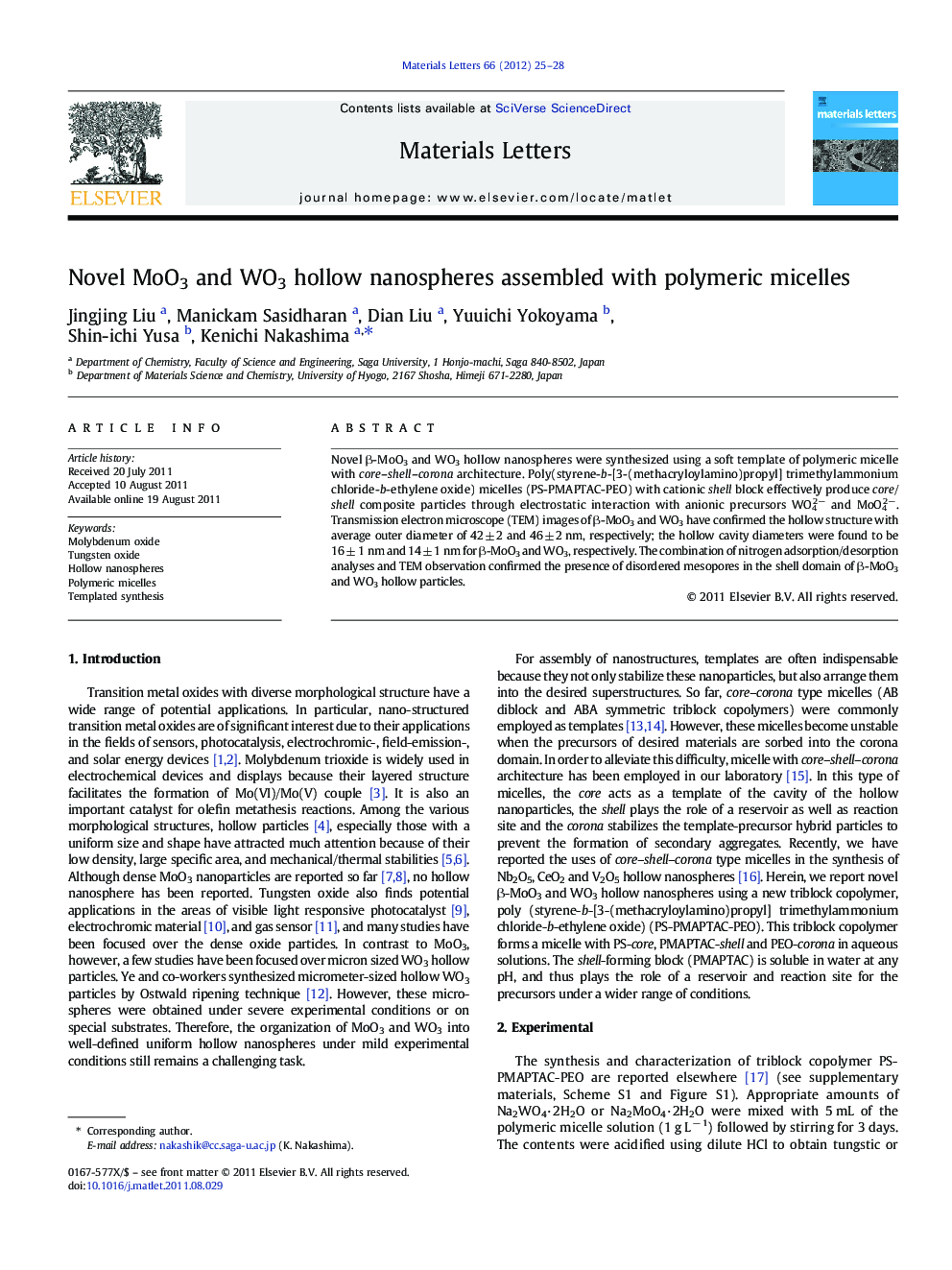| Article ID | Journal | Published Year | Pages | File Type |
|---|---|---|---|---|
| 1647705 | Materials Letters | 2012 | 4 Pages |
Novel β-MoO3 and WO3 hollow nanospheres were synthesized using a soft template of polymeric micelle with core–shell–corona architecture. Poly(styrene-b-[3-(methacryloylamino)propyl] trimethylammonium chloride-b-ethylene oxide) micelles (PS-PMAPTAC-PEO) with cationic shell block effectively produce core/shell composite particles through electrostatic interaction with anionic precursors WO42− and MoO42−. Transmission electron microscope (TEM) images of β-MoO3 and WO3 have confirmed the hollow structure with average outer diameter of 42 ± 2 and 46 ± 2 nm, respectively; the hollow cavity diameters were found to be 16 ± 1 nm and 14 ± 1 nm for β-MoO3 and WO3, respectively. The combination of nitrogen adsorption/desorption analyses and TEM observation confirmed the presence of disordered mesopores in the shell domain of β-MoO3 and WO3 hollow particles.
Graphical abstractNovel MoO3 and WO3 hollow nanospheres assembled with polymeric micelles Jing Jing Liu, Manickam Sasidharan, Dian Liu, Yuuichi Yokoyama, Shin-ichi Yusa and Kenichi Nakashima.A simple method is described for fabrication of β-MoO3 and WO3 hollow nanospheres using polymeric micelles as soft templates.Figure optionsDownload full-size imageDownload as PowerPoint slideHighlights►Core-shell-corona micelle was used for β-MoO3 and WO3 hollow nanospheres syntheses. ►The cationic shell domain plays a crucial role in the formation of hollow particles. ►TEM images β-MoO3 and WO3 confirmed the hollow nanospheres formation. ►XRD patterns suggested the formation of phase pure β-MoO3 and WO3.
